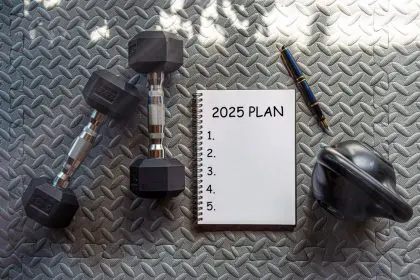You roll out of bed, stumble to the kitchen, and reach for your coffee maker like it’s a lifeline. After that first magical sip, you feel human enough to consider stretching or moving your body. But here’s the plot twist that could change your entire morning routine: your beloved caffeine hit is actually working against your flexibility and mobility goals.
The timing of when you stretch versus when you consume caffeine creates a cascade of physiological effects that either support or sabotage your body’s natural awakening process. Most people have this sequence completely backwards, missing out on enhanced flexibility, better energy regulation, and improved physical performance throughout the day.
Your body wakes up in a uniquely receptive state for movement and stretching, but caffeine quickly changes your internal chemistry in ways that make stretching less effective and potentially counterproductive. Understanding this timing can transform both your flexibility and your relationship with your morning coffee.
Your morning body is primed for maximum flexibility
When you wake up, your body is in a naturally relaxed state that’s perfect for stretching and mobility work. Your nervous system is calm, your stress hormones are at their lowest point of the day, and your muscles haven’t yet tensed up from daily activities and mental stress.
Your core body temperature is also lower in the morning, which makes your connective tissues more pliable and responsive to gentle stretching. This is the opposite of what most people think, they assume they need to “warm up” before stretching, but your body is actually most receptive to flexibility work when it’s in this cooler, relaxed state.
Morning cortisol levels follow a natural pattern called the circadian rhythm, and immediately upon waking, cortisol is transitioning from its lowest point to gradually increasing. This creates a window where your body is receptive to gentle movement without the tension that higher cortisol levels create later in the day.
Your parasympathetic nervous system, which controls rest and repair functions, is still partially active when you first wake up. This state is ideal for gentle, meditative movement that enhances flexibility while supporting your body’s natural transition from sleep to wakefulness.
Caffeine triggers muscle tension and stress responses
The moment caffeine enters your system, it begins activating your sympathetic nervous system and triggering the release of stress hormones like cortisol and adrenaline. These chemical changes create muscle tension and make your body less receptive to the relaxing, lengthening effects of stretching.
Caffeine blocks adenosine receptors in your brain, which is how it makes you feel alert, but this same mechanism also interferes with your muscles’ ability to relax and release tension. When adenosine is blocked, your muscles maintain a higher level of baseline tension that works against flexibility goals.
The stimulant effects of caffeine also increase your heart rate and blood pressure, shifting your nervous system into a more alert, reactive state. While this alertness is great for mental performance, it’s counterproductive for the calm, mindful state that’s most beneficial for stretching and mobility work.
Caffeine consumption also triggers the release of stress hormones that promote muscle contraction and readiness for action. This evolutionary response helped our ancestors respond to threats, but it works against the muscle lengthening and relaxation that effective stretching requires.
Pre-coffee stretching enhances natural energy production
When you move your body before consuming caffeine, you’re working with your natural energy systems rather than overriding them with stimulants. Gentle movement and stretching naturally increase circulation, deliver oxygen to your tissues, and stimulate your body’s own energy production mechanisms.
This natural energy boost is more sustainable and doesn’t come with the crash that often follows caffeine consumption. You’re essentially teaching your body to wake up and energize itself, creating a foundation of vitality that doesn’t depend on external stimulants.
Morning movement also helps regulate your circadian rhythm, signaling to your body that it’s time to be awake and alert. This natural awakening process supports better sleep quality that night and more consistent energy levels throughout the day.
The combination of increased circulation, improved oxygen delivery, and natural hormone regulation that comes from pre-coffee movement creates sustained energy that enhances rather than conflicts with any caffeine you consume later.
Stretching first improves coffee’s beneficial effects
When you stretch before having coffee, you’re setting up your body to better utilize caffeine’s benefits while minimizing its negative side effects. Pre-movement primes your circulation, which helps distribute caffeine more evenly throughout your system and reduces the likelihood of jitters or anxiety.
The relaxed, centered state that comes from morning stretching also helps you be more mindful about your caffeine consumption. Instead of desperately gulping coffee to feel human, you’re choosing to enhance an already pleasant state of alertness and well-being.
This approach also helps prevent the common pattern of using caffeine to compensate for poor sleep, stress, or low energy. When you feel naturally energized from movement, you’re more likely to consume caffeine for enjoyment rather than necessity, leading to healthier consumption patterns.
The improved stress tolerance that comes from regular morning movement also helps your body handle caffeine better, reducing the anxiety, digestive issues, or sleep problems that some people experience with coffee consumption.
Your fascia responds best to gentle morning mobilization
Your fascial system, the network of connective tissue that surrounds and supports your muscles, is particularly responsive to gentle stretching in the morning before stimulants affect your system. Fascia responds to slow, sustained pressure and movement, which is much easier to achieve when your nervous system is calm.
Coffee consumption activates your sympathetic nervous system, which tends to make people want to move quickly and forcefully. This activated state works against the slow, mindful movement that’s most beneficial for fascial health and long-term flexibility improvements.
Morning fascial work also helps distribute the lubricating fluids that accumulate in your tissues overnight. This natural rehydration process works best when your system is relaxed and not competing with the dehydrating effects of caffeine.
The gentle pressure and movement of pre-coffee stretching help reset fascial tension patterns that develop during sleep, preventing them from becoming entrenched throughout the day and contributing to chronic stiffness or pain.
Creating a sustainable morning movement practice
The key to making pre-coffee stretching sustainable is keeping it simple and enjoyable rather than treating it like an intensive workout. Even five minutes of gentle movement can provide significant benefits and create a positive start to your day.
Focus on movements that feel good rather than trying to achieve specific flexibility goals. Cat-cow stretches, gentle spinal twists, shoulder rolls, and light hip circles are all excellent options that work well in pajamas and don’t require any equipment.
Start small and build gradually rather than trying to implement a long routine immediately. Success with morning movement comes from consistency rather than intensity, so it’s better to do a little bit every day than a lot occasionally.
Consider this movement practice as a form of meditation or mindfulness rather than exercise. The goal is to connect with your body, breathe deeply, and create a calm, centered state that enhances the rest of your day.
Once you’ve established a pre-coffee movement routine, you’ll likely find that your coffee tastes better, affects you more positively, and becomes an enhancement to your morning rather than a necessity for basic function.
















